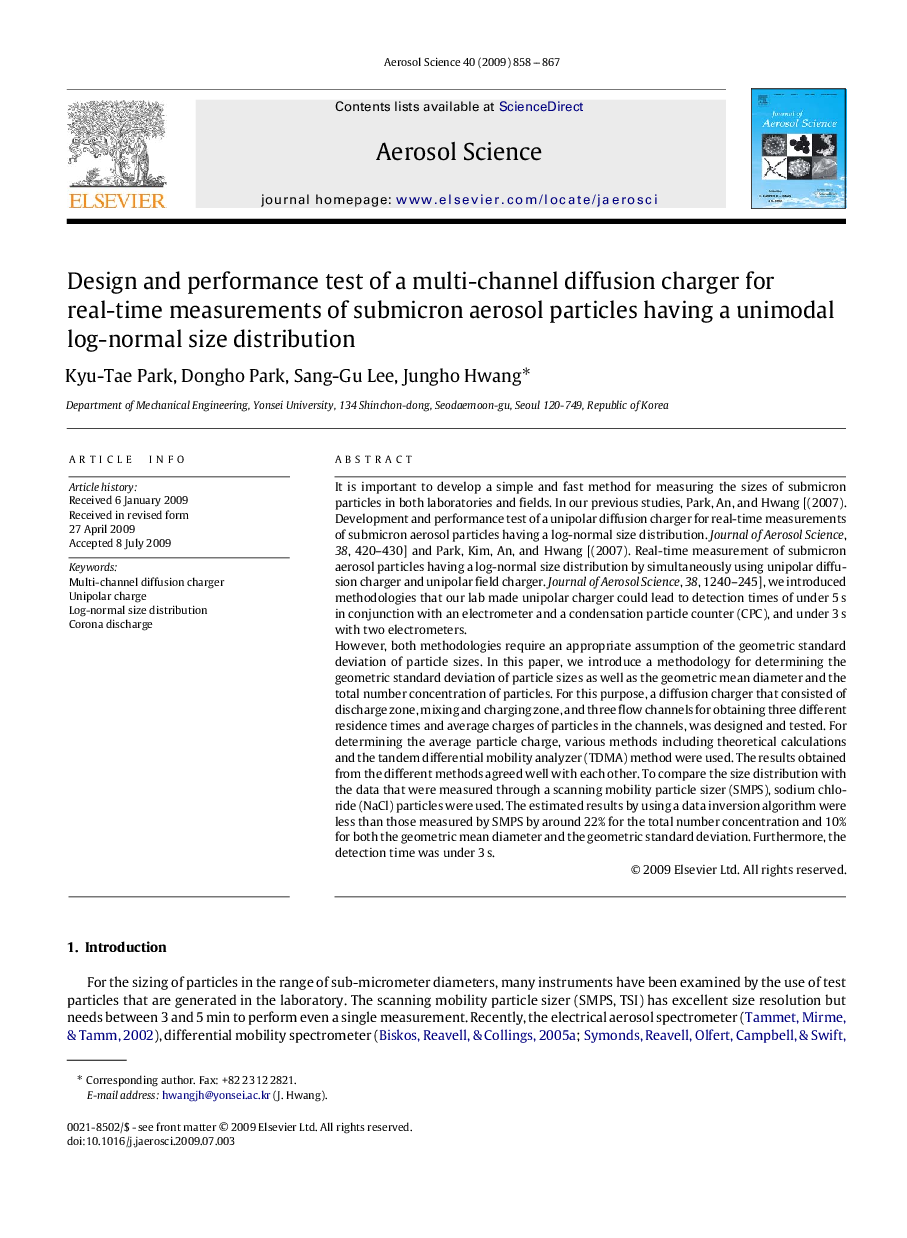| Article ID | Journal | Published Year | Pages | File Type |
|---|---|---|---|---|
| 4452968 | Journal of Aerosol Science | 2009 | 10 Pages |
It is important to develop a simple and fast method for measuring the sizes of submicron particles in both laboratories and fields. In our previous studies, Park, An, and Hwang [(2007). Development and performance test of a unipolar diffusion charger for real-time measurements of submicron aerosol particles having a log-normal size distribution. Journal of Aerosol Science, 38, 420–430] and Park, Kim, An, and Hwang [(2007). Real-time measurement of submicron aerosol particles having a log-normal size distribution by simultaneously using unipolar diffusion charger and unipolar field charger. Journal of Aerosol Science, 38, 1240–245], we introduced methodologies that our lab made unipolar charger could lead to detection times of under 5 s in conjunction with an electrometer and a condensation particle counter (CPC), and under 3 s with two electrometers.However, both methodologies require an appropriate assumption of the geometric standard deviation of particle sizes. In this paper, we introduce a methodology for determining the geometric standard deviation of particle sizes as well as the geometric mean diameter and the total number concentration of particles. For this purpose, a diffusion charger that consisted of discharge zone, mixing and charging zone, and three flow channels for obtaining three different residence times and average charges of particles in the channels, was designed and tested. For determining the average particle charge, various methods including theoretical calculations and the tandem differential mobility analyzer (TDMA) method were used. The results obtained from the different methods agreed well with each other. To compare the size distribution with the data that were measured through a scanning mobility particle sizer (SMPS), sodium chloride (NaCl) particles were used. The estimated results by using a data inversion algorithm were less than those measured by SMPS by around 22% for the total number concentration and 10% for both the geometric mean diameter and the geometric standard deviation. Furthermore, the detection time was under 3 s.
